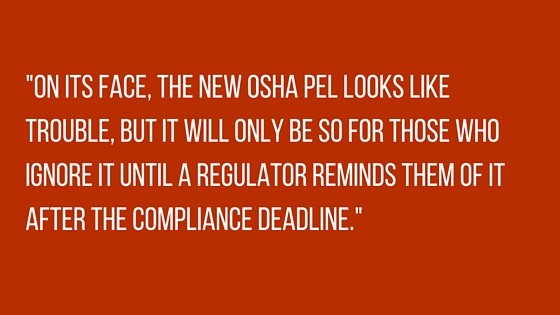News of the Occupational Health and Safety Administration’s new silica rule has sounded the alarm for many business owners – it looks like a heaping pile of trouble for everyone involved. Luckily, OSHA has spent enough time consulting with the industry to come up with practical silica exposure regulations that will only be an issue for those who wait till after the June 2017 deadline* to comply. In most cases, compliance can easily be achieved by using equipment properly and employing practical engineering controls.
So, what is the difference between this new rule and its predecessor?
- The Permissible Exposure Limit (PEL) has been reduced to 0.05 mg/m3 (Note: this is the same level that the National Institute of Occupational Health and Safety (NIOSH) Recommended Exposure Limit (REL) has been for some time)**
- The method for calculating exposure is significantly simplified and no longer dependent on the percentage of silica in the exposure sample.
- Despite OSHA making it a priority, enforcement of the old silica rule was not obvious out in the real world.
Point number two explains why you may not be able to recall ever having a regulator collect samples for silica on one of your job sites. Collecting a regulatory compliance sample was a crapshoot; a cloud of dust on your job site did not necessarily mean there was enough respirable silica in that cloud to cause PEL exceedance. With the new rule, a regulator can simply collect a viable sample from any work activity creating visible dust.
Research has shown that the heavy dust generating construction activities like tuckpointing, masonry saw operation, and jackhammering regularly exceed the old PEL by many times, so chances are that a regulator following a cloud of dust will return sample results above the final rule PEL. Fortunately, OSHA has approached this adoption from a practical point of view and, in most cases, states will adopt the federal rule but will do so in a way that extends all the deadlines by six months.

Included in the new rule are requirements to assess and control worker exposure:
- Monitoring, exposure assessments
- Engineering controls
- Respiratory protection plans, and
- Medical monitoring requirements.
It sounds like a lot of work to gain compliance, and it certainly has the potential to cause headaches.
To simplify things a bit, OSHA produced a document called Table 1- Specified Exposure Control Methods When Working With Materials Containing Crystalline Silica which outlines methods that exempt employers from instituting other control measures. As an example, imagine you are working with a stationary masonry saw on your job site. As long as your blade consistently has water delivered to it and you follow manufacturer’s guidelines to reduce dust emissions, no more respiratory protection or controls will be required by OSHA for up to an 8-hour shift operating the equipment.
Of course, fine print leaves areas open to interpretation by individual regulators, but Table 1 provides employers and consultants a solid framework of guidelines to operate within. Potential worker exposure could also be addressed the “old fashioned” way with exposure assessments, but these are only necessary whenever the requirements of Table 1 are not or cannot be met.
On its face, the new OSHA PEL looks like trouble, but it will only be so for those who ignore it until a regulator reminds them of it after the compliance deadline. There is plenty of time before final rule comes into full effect to assess current worker exposure, employ practical engineering controls, and purchase equipment that easily meet the requirements outlined by OSHA in Table 1.

Have questions about how to make sense of the new silica rule? Get in touch with us on our website.
* The rule will be adopted on June 23, 2016, and compliance is required by June 23, 2017.
**Why the rift? Check out our post about Legal Regulations vs. Scientific Recommendations

